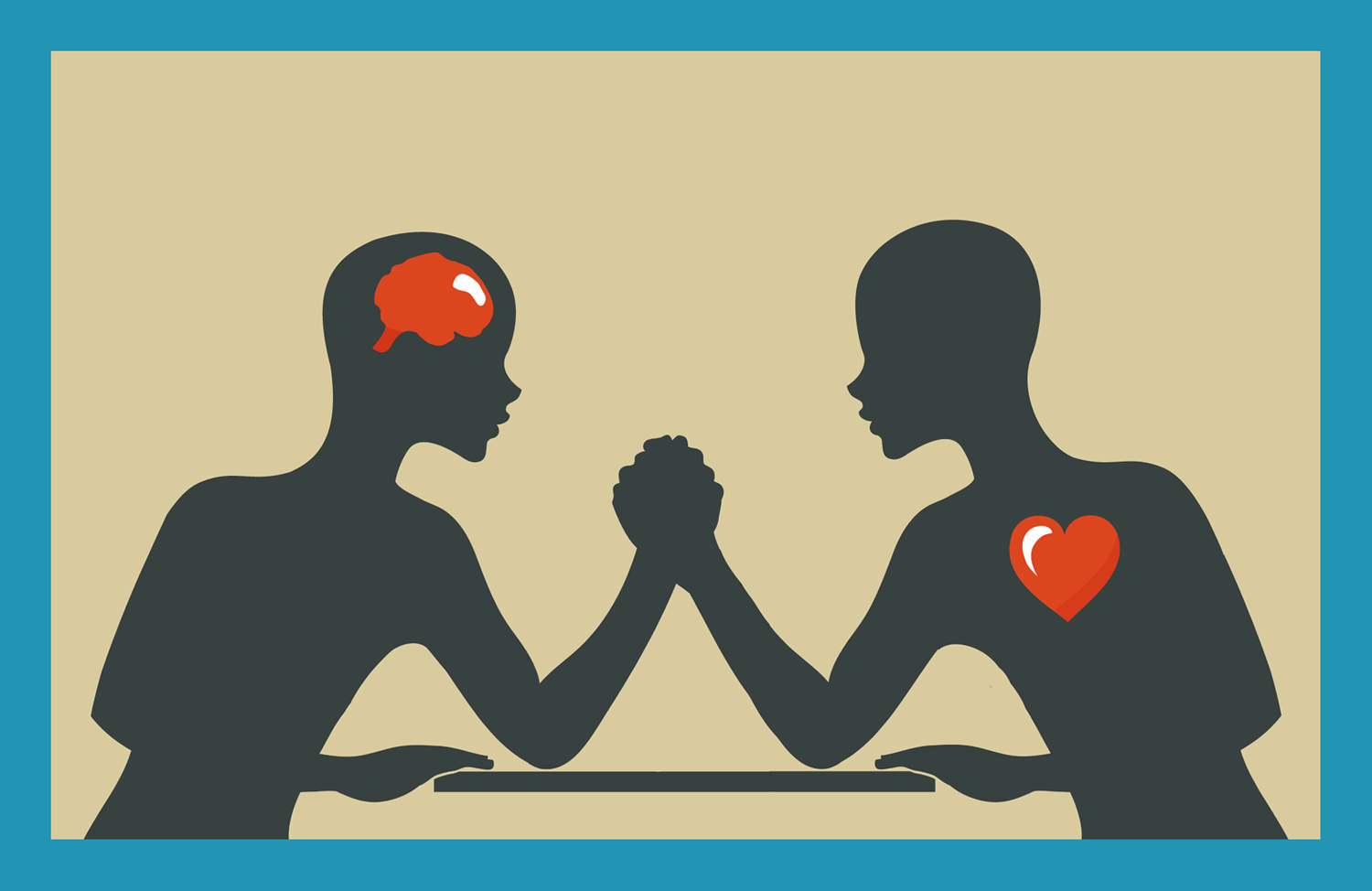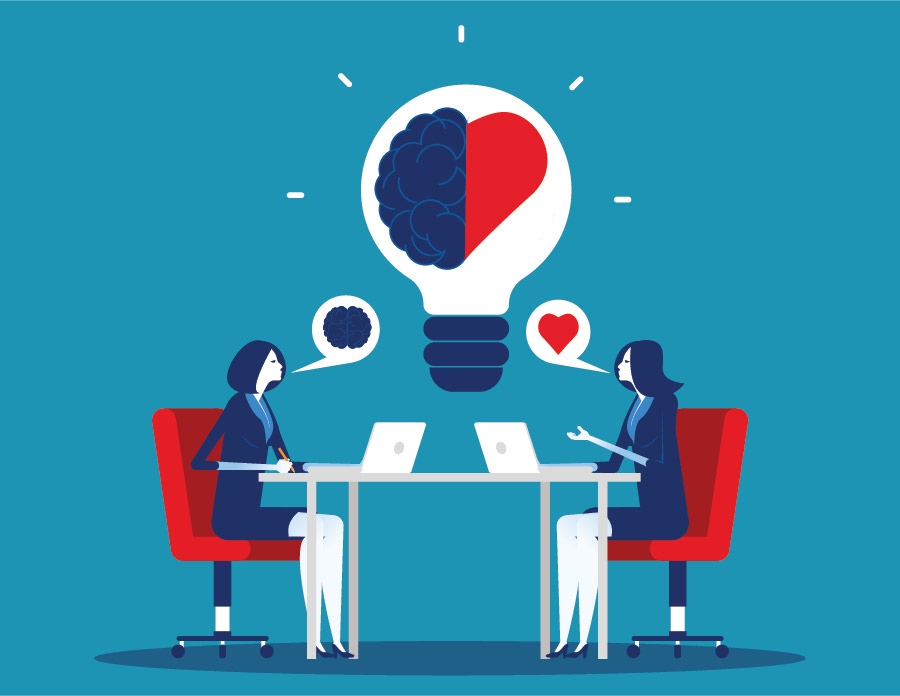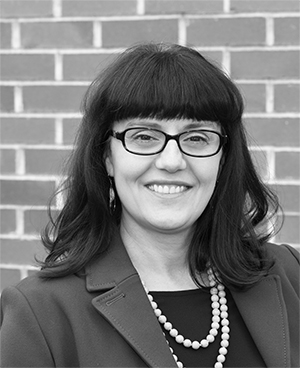
Are You a Thinker or a Feeler?
By Denali Daniels
On a cold and rainy Tuesday last winter at the Crowne Plaza hotel in downtown Seattle, I stood with 10 other “Thinkers” waiting for instructions. Eight “Feelers” stood on the opposite side of the room near the leftover cinnamon rolls from breakfast. Earlier that morning, we had identified our best-fit Myers Briggs personality type, and we were now learning about type differences.
Six months prior, a client asked for Myers Briggs training during their annual retreat. I couldn’t find a trainer in the state, but I landed on the Myers Briggs website and began to research. I discovered there are a number of popular tools, such as the Clifton StrengthsFinder assessment, the DiSC Profile, the Enneagram Type, and the Color Code Personality Assessment, to name the most reputable. All offer a similar approach to Myers Briggs, with individuals taking an assessment leading to insight into their personality and the benefits of applying understanding of type in personal and professional relationships.
As a psych major in college I was intrigued by the study of personality theory, and it seemed like a good fit for my facilitation and strategic planning clients, so I enrolled to become certified. I chose Myers Briggs because I was impressed by its global application across cultures: Statistically, the number of people represented by each type is consistent regardless of where people live. Today, Myers Briggs is used in more than 70 countries and by most Fortune 100 companies and is widely considered the most accurate personality-type test in the world.
Our trainer, Linda, was recovering from hip surgery and outlined our workshop assignment from a barstool at the front of the room. Just a few hours into our Myers Briggs certification training, Linda had already won our respect. That morning, she had captivated us with stories from early in her career when she worked with Isabell Briggs Myers to develop one of the telephone book-thick manuals we each had in front of us. Seeing her at the front of the room made me feel a sense of responsibility – that somehow a torch was being passed to us. We were learning from someone who literally wrote the book on Myers Briggs.
Myers Briggs helps people understand their different preferences in four areas: 1) how we get energized (extraversion vs. introversion), 2) how we take in information (sensing vs. intuition), 3) how we make decisions (thinking vs. feeling), and 4) how quickly we make decisions (judging vs. perceiving). Our group was now on #3: thinking and feeling.
Linda warned us about the tendency for stereotyping. People who prefer thinking aren’t over analyzers, and people who prefer feeling aren’t emotionally unstable. Both preferences are rational approaches to making decisions. Thinkers use a logical and detached approach, while Feelers make decisions based on personal values. As we listened in anticipation, Linda asked us to “devise a plan to cut the company’s budget by 30%. You have five minutes.”
The Thinkers got to work. First, we decided we needed as much data as possible about the company’s budget to be clear about exactly what needed to be done. Using logic, we agreed that 30% was likely impossible without letting some staff go, and we went straight to deciding how to best accomplish the goal. Our top priority was to establish a fair and transparent process that everyone understood. Our spokesperson, Jerry, reported this out to the Feelers as we stood broad chested and proud that we had a clear path forward.

Then it was the Feelers’ turn to report back, with Tom as the spokesperson. I was surprised to see Tom on the Feelers’ side. He was a recently retired executive from Pepperidge Farms and seemed like a solid manager. After Jerry pitched the Thinking group’s straightforward and logical approach to the problem, Tom reported: “Our top priority is that no one gets laid off.”
The Thinking group’s eyes bugged out. Some jaws dropped. The exercise was pretend and we didn’t even know one another, but all of a sudden there were emotions on the Thinker team.
Tom continued, “And if we do have to do that, which we are determined to avoid, we want to consider each individual’s circumstances. For example, Sally’s husband just left her, and she’s got a baby, so we need to consider individual situations before making decisions that will affect people.”
Our broad shoulders sunk as we began realizing our approach had been short-sighted.
Tom finished, “We also think that we could consider closing the coffee café in the lobby. However, before we make a decision like that we would want to explore the impact it might have on employee morale.”
Linda asked the group of Feelers, “What went through your mind as you heard the Thinkers describe their approach?”
Feelers responded:
“Insensitive.”
“Didn’t consider the impact on people.”
“Lack of empathy, couldn’t believe it.”
Linda turn to us Thinkers, “What went through your mind as you heard the Feelers describe their approach?”
We were quiet to start, searching for tactful words.
“It’s difficult to envision how they will be able cut the budget with all this soft stuff.”
“We can’t play favorites. In order to be fair, everyone should be treated in the same way.”
“Irrational and inefficient.”
I felt for a moment like I belonged to the club of jerks! But then I thought, who is going to make the tough decisions when they need to be made? That was when I realized how important both of these perspectives are in the world. For a moment there was a bit of tension in the room, but it passed quickly.
According to my Myers Briggs textbook, the U.S. population is split, with 40 percent Thinkers and 60 percent Feelers. That means we can expect a mix of both preferences in most groups, and we must assume both perspectives are valuable. But it’s easy to see how conflict can arise. You can also see potential challenges if an entire team were made up of either Thinkers or Feelers – either could have some serious blind spots.

As the week progressed, I found myself more sincerely hearing out the perspectives of those who didn’t share my preferences. Having a basic understanding of personality type and knowing others’ preferences made our interactions more meaningful.
I have now conducted Myers Briggs training with more than 60 people. I am learning that not only do people enjoy learning about themselves, but they are interested in learning about the dynamics of their loved ones and their coworkers. Just being cognizant of type can be curative in reducing conflict, and most people want less conflict.
I am inspired to carry the Myers Briggs torch and to join an international network of Myers Briggs practitioners helping people work toward a better understanding of others. Just imagine what we could do with this knowledge on a global level!
And to you fellow Feelers, please have patience with us Thinkers, we truly aren’t insensitive, we are just detached. And if you are a fellow Thinker, please join me in considering how all of this might impact other people now, okay?

Denali Daniels was born, raised, and educated in Alaska. She grew up in Kasilof in a log cabin. She holds a Bachelor of Arts in Psychology and Masters in Public Administration, both from the University of Alaska, Anchorage. Daniels has spent more than 20 years serving in public, private and non-profit sectors where she has assisted teams on major efforts including energy, health care, utilities, professional licensing, criminal justice reform and senior services, education and early childhood development.
Throughout the years Daniels has traveled to hundreds of Alaska villages and communities, leading numerous, often high-profile, initiatives across the state. In 2012, she founded DDA where she leads a team of high functioning facilitators and planners who help clients get their teams on the same page and charting their critical path forward.
Denali Daniels
President
Denali Daniels and Associates